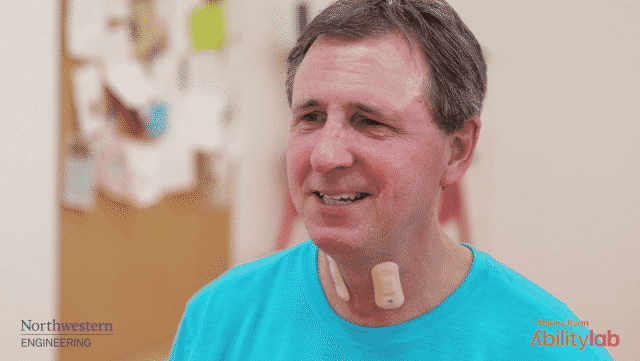Don't worry, your doctor and stroke hospital will do nothing with this, they won't even know it exists. If you recover the payment stream from you will stop.
Stretchable Electronics for Stroke Rehabilitation

An
innovative device worn on the throat offers exciting possibilities in
the rehabilitation of stroke patients. The device, developed in the lab
of Northwestern University professor John A. Rogers in conjunction with
the Shirley Ryan AbilityLab, allows patients to be monitored both while
they are hospitalized and after they go home.
The
device’s position on the throat’s suprasternal notch gives physicians
data on key areas affected by strokes, such as speech patterns and
swallowing ability. It can also help in the diagnosis and treatment of
aphasia, a communication disorder that can occur after a stroke.
The
device continuously and wirelessly transmits data to a
Bluetooth-enabled system such as a smartphone. The stretchable sensor is
thin, soft and flexible, so it can be attached to the skin comfortably
and can be hidden beneath collared shirts.
“The sensor allows us to objectively and quickly measure speaking time
during therapy or when the patient is at home or in the community,” says
Leora Cherney, PhD, scientific chair of the Think + Speak Lab of the
Shirley Ryan AbilityLab. “It allows us to monitor patients from a
distance, and it provides almost instantaneous feedback to both the
patient and clinician.”
The
feedback allows clinicians to see how their patients are functioning in
the real world — when gains tend to drop off — and helps patients track
their progress toward their goals.
The device may have other applications, too. Rogers says it’s being
studied for sleep apnea, and Cherney notes that the sensor may be
appropriate for patients with other conditions associated with
communication problems such as Parkinson’s disease and Alzheimer’s
disease.
No comments:
Post a Comment